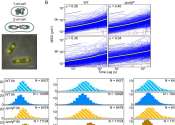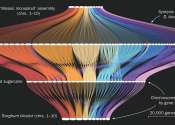A pathogen (from Greek πάθος path "suffering, passion", and γἰγνομαι (γεν-) gignomai (gen-) "I give birth to"), infectious agent, or (more commonly) germ, is a biological agent that causes disease or illness to its host. There are several substrates and pathways whereby pathogens can invade a host; the principal pathways have different episodic time frames, but soil contamination has the longest or most persistent potential for harboring a pathogen.
The body contains many natural defenses against some of the common pathogens (such as Pneumocystis) in the form of the human immune system and by some "helpful" bacteria present in the human body's normal flora. However, if the immune system or "good" bacteria is damaged in any way (such as by chemotherapy, human immunodeficiency virus (HIV), or antibiotics being taken to kill other pathogens), pathogenic bacteria that were being held at bay can proliferate and cause harm to the host. Such cases are called opportunistic infection.
Some pathogens (such as the bacterium Yersinia pestis, which may have caused the Black Plague, the Variola virus, and the Maleria protozoa) have been responsible for massive numbers of casualties and have had numerous effects on afflicted groups. Of particular note in modern times is HIV, which is known to have infected several million humans globally, along with the Influenza virus. Today, while many medical advances have been made to safeguard against infection by pathogens, through the use of vaccination, antibiotics, and fungicide, pathogens continue to threaten human life. Social advances such as food safety, hygiene, and water treatment have reduced the threat from some pathogens.
Not all pathogens are negative. In entomology, pathogens are one of the "Three P's" (predators, pathogens, and parasitoids) that serve as natural or introduced biological controls to suppress arthropod pest populations.









